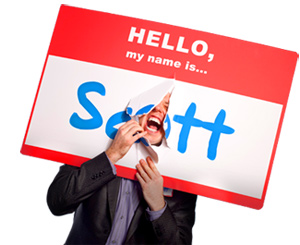Beyond Free Mints: 4 Keys to Approachable Trade Show Conversations
By Scott Ginsberg
It’s 10:15 am Sunday morning. Hordes of wandering guests stroll through the tradeshow hall amidst hundreds of booths and exhibits—including yours. There is little or no chance these people will enter into business with your company.
Face it: they probably just stopped by for the free candy or cool chotchky sitting on your table.
So, how do you give those people permission to engage? Or, if you’re the attendee, how do you keep from sitting quietly in the corner looking at the education descriptions for the ninth time instead of finding and meeting new people?
One word: approachability. Sure, it’s an expression that varies from person to person. But after delivering speeches to companies and associations around the world on the topic, here’s what I’ve learned:
1. It starts with attitude. Sure, maybe this person won’t be your next big customer or trusted advisor. But you never know. Everybody is somebody’s somebody! So be sure that an attitude of approachability is manifested via your nonverbal behavior, i.e., smiling, readable nametag, and uncrossed arms.
2. It continues with engagement. What’s your opener? Will you be like every other novice and ask, ‘How are you?’ If so, expect to get the canned answer, ‘F.I.N.E,’ which stands for ‘Feelings I’m Not Expressing.’
3. It accelerates with CPI’s. Conversation is about common ground. And people will like you the minute they discover how much they are like you. So, discover the CPI (Common Point of Interest) through creative, specific, open-ended questions in order to develop a deeper connection.
4. It solidifies with consistency. I always end my speeches with the quotation, ‘Consistency is far better than rare moments of greatness.’ This means that in the eyes of every person you come across, you = the entire company. Be certain your words and actions are congruent with you brand values.
So, even if it’s the end of the day and you’re all out of energy and free mints, remember this last tip on approachability: ‘Fear not to entertain strangers, for by so doing some may have entertained angles unaware.’

